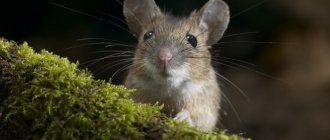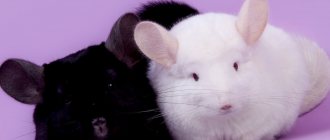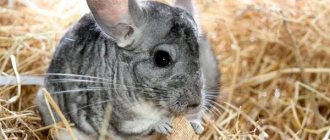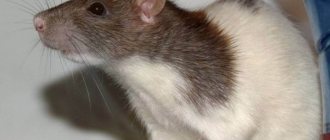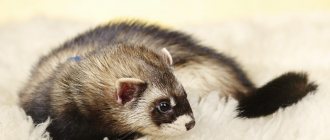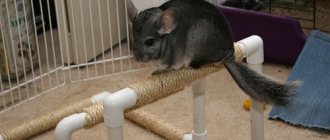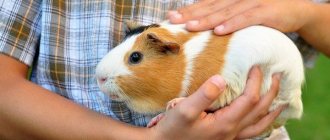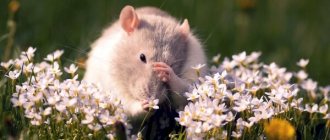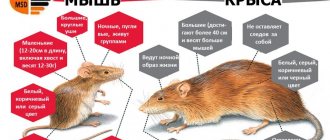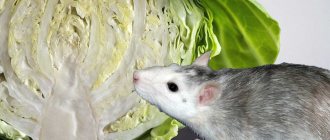- Wild animals
- >>
- Mammals
The vole mouse is a constant companion of humanity.
Due to the fact that these small animals carry many dangerous diseases and damage agricultural crops, people consider mice their enemies. At the same time, in folk art you can often find a mouse - a fairy-tale assistant, a faithful companion in business. This material is about the field mouse, a small and charming animal that plays a vital role in the functioning of ecosystems over vast territories, in a wide variety of natural conditions.
Mice are a cosmopolitan mammal species
Mice have a wider distribution throughout the world than any other mammal except humans. Their geographic distribution has been aided by commensal relationships with humans that go back at least 8,000 years .
As commensal animals, house mice live in close proximity to humans and rely on us for food and shelter. They are at home in our homes, barns, outbuildings, warehouses, stores, granaries, fields and farms. But wild individuals are found in almost all habitats - from coastal meadows and dunes to the subalpine zone ( except for the highlands ). Mice also live on a number of sub-Antarctic islands; they are absent only in the Far North and Antarctica.
Photo: Wikipedia
Younger age
Starting from the fourth day, the development of little rat pups occurs at a rapid pace.
- 4th day the ears open, the pups begin to distinguish sounds and hear rustling sounds;
- 6th body is covered with soft dark fluff;
- On the 8th, teeth emerge, except for the main incisors.
After 10 days of life, the pups become active. They crawl well and master the terrain. If these are pets, they should be handled more often so that the animals grow up tame. However, during the game they should not be left unattended, since coordination of movements is not yet developed, the kids can fall to the floor from a table, any height.
The mouse is a typical omnivore
Seeds and grains are the staple foods of house mice, although they are opportunistic omnivores that eat a wide variety of foods. Wild individuals feed on fleshy roots, leaves, stems, berries, insects, caterpillars, spiders, cockroaches, and invertebrate larvae. They do not disdain carrion . Commensal mice feed on any food available to humans, as well as paste, glue, soap and other household items. They especially love foods high in fat, protein and even sugar.
Most of the mice's water needs are met by the moisture in their food. Because they have the ability to concentrate urine, this allows them to colonize semi-desert areas . Mice fed seeds with up to 12% protein can survive without supplemental drinking, but above this protein level they require 3-13 grams of water per day.
Mice have a very high metabolism , so they need to eat 15 to 20 times a day. Because of this frequent need for food, most wild mice make their homes near a food source.
Features and habitat
The mouse is a mammal animal, the order of rodents and the suborder of mice. Rats, by the way, are very similar to mice and belong to the same suborder. The rodent order is one of the most numerous. There is no place on earth that these small animals have not conquered. They can handle any natural area; they are not afraid of either arid areas or snowy places.
They adapt to new living conditions so quickly that they cannot be frightened by any discomfort. Most often, rodents live in burrows, but they find food for themselves on the surface of the earth. Mice, for example, lead only a terrestrial lifestyle, although they have their own burrows.
The photo shows a mouse hole in the grass
The body size of an ordinary mouse is small - its length does not exceed 10 cm, and its weight is only 30 g; its muzzle is small, but its ears and eyes are large. This is understandable - mice constantly need to listen and look closely to see if there is any danger. The tail is not the most beautiful part of this animal’s body.
The fur on it is very sparse, and the length reaches half the length of the body. Moreover, if you look closely, you can see ring-shaped scales. But the mouse itself is not too worried about its beauty, because its entire body is adapted to survive in any conditions, and this is much more important.
The skeleton is strong, reliable and elastic, the color is gray with various shades, that is, exactly the one that will hide the animal from a quick glance, the movements are fast, nimble, dexterous, each part of the body is clearly honed by time for its specific functions and copes with them perfectly , otherwise the animal would not have survived to this day since the Paleocene.
A very interesting feature of the body of this rodent is the structure of the dental system. Mice have molars and two large pairs of incisors, which do not have roots, and because of this they constantly grow by 1 mm per day. So that such teeth do not grow to terrible sizes and simply fit in the mouth, mice are forced to constantly grind them down.
Mice have very interesting vision. It is well developed, because they need to see danger at a far distance. But white mice , that is, those that live as pets, have much weaker vision for the simple reason that they do not need to hide from danger.
It is curious that many mice have color vision, but they do not perceive the full color gamut. For example, these rodents perfectly see yellow and red colors, but they cannot distinguish between blue and green.
The photo shows a white mouse
One mouse produces up to 10 litters per year
Under ideal conditions, one pair of mice and their offspring can produce more than 1,000 pups in a year . Breeding begins at 6-10 weeks of age, and each female can produce 5-10 litters per year. The estrus cycle is 4-6 days, with estrus lasting less than one day. After a short gestation period of about 3 weeks, 3 to 12 pups are born and the cycle begins again 12 to 18 hours after birth.
Photo: Nick Fewings
Newborn mice weigh about 1 gram , are naked except for short whiskers, and their eyes and ears are closed. They are fully covered with fur after 10 days, and by 14 days their eyes and ears are fully open and their incisors have erupted. The young are weaned and begin to leave the nest at the age of 20-23 days, weighing about 6 grams.
While favorable conditions (e.g. nutrition) determine reproduction in commensal populations, wild populations are seasonal breeders and their reproduction is likely influenced by a combination of day length and food availability. Mortality rates before independence were typically 60-70%.
Photo: Phys.org
Newborns
Rats are born deaf, blind, naked, with a short tail, and undeveloped limbs. Body pink. Seeing such a baby, it is difficult to immediately determine who his mother is and what type of rat she belongs to.
Interesting!
Initially, the weight of a newborn is no more than 6 g. However, body weight increases every day by 2-3 g, since baby rats have an excellent appetite and actively suck the nutritious milk of the female.
On the third day of life, the baby rat appears soft, dark-colored fluff on its back. The future color is already visible. From this moment the next period of the children’s life begins.
Mice live in small colonies or family groups
Depending on the prevailing environmental conditions, mice occur alone, in pairs, in small family groups, or in multiple families coexisting at very high densities. Social groups usually consist of a dominant male and several females.
Mice densities range from 10 individuals per square meter in commensal species to 1 individual per 100 square meters in wild species. Under ideal conditions, populations can grow strongly, with numbers exceeding 200,000 individuals per hectare .
What does it look like
Mice of individual species look different, but there are some features that are common to all representatives of this subfamily, for example:
- Large soft ears, oval in shape.
- Big bulging eyes.
- Oblong body.
- Tail bare or covered with sparse hairs.
- Different sizes of front and rear limbs. The front ones are much shorter.
- The anatomy of mice involves long incisors that grow throughout life.
The body length of representatives of the mouse order varies from eight to twelve centimeters in length. The size of some species can reach fifteen centimeters.
Mice are crepuscular animals
Mice are sensitive to bright light, so they are usually nocturnal or crepuscular. Commensal mice adapt to the daily routine of humans. Rodents alternate between sleep and wakefulness for 0.5-1.5 hours. The mouse's activity range is usually limited to an area with an average radius of 3 meters.
Using its superior senses of hearing, smell, taste and touch, the mouse becomes an expert in its range, learning and remembering the location of food, paths and obstacles. When a new object comes into their range, mice are usually not afraid to explore it.
Behavior of adults
You can also distinguish mice from rats by their behavior. The mouse is very afraid of people and does not catch their eye, and in case of any threat it tries to run away very quickly. Pasyuki, on the contrary, are very angry and aggressive, and sometimes even attack people. And large individuals sometimes even gather in flocks and fight off enemies together.
Pasyuki do not get along with voles and are not in the same house or outbuildings with them at the same time. If they have already appeared, this means that all other small animals will be destroyed or move to another place.
Mice are used in nearly 75% of animal research procedures
The following are approximate figures for the use of model organisms in laboratory research:
- rats, mice and other rodents, universal laboratory species – 83.3%;
- fish, amphibians, reptiles and birds – 15%;
- sheep, cows, pigs and other large mammals – 1.5%;
- dogs and cats bred for research; the use of stray pets is unacceptable – 0.1%;
- Primates, mainly monkeys and macaques – 0.1%.
Photo: Genetic Engineering and Biotechnology News
Chimpanzees, orangutans and gorillas have not been used in most EU countries for more than 20 years, and in the UK their use is completely banned. Around this time, it was allowed to clone mice . The first cloned mouse, named Cumulina, was born on October 3, 1997 and lived for 2 years and 7 months.
How are farmers harmed?
Mice, like many other rodents, cause a lot of damage to farms. Here's why mice are dangerous:
- mice carry dangerous diseases (typhoid, plague, salmonellosis, etc.);
- they leave their excrement wherever they run and climb (various infections are also transmitted to people through feces);
- chew wires, furniture, walls and other household items;
- Mice are dangerous for the garden: they spoil the harvest (they gnaw the bark of fruit trees and their roots, eat the harvest);
- They eat the feed of farm animals and leave their excrement in it, which leads to food spoilage.
Video
80% of human genes have a comparable gene in mice
The mouse is an excellent model for studying human diseases because its DNA organization and gene expression are similar to those of humans: 80% of human genes have a comparable gene in mice. These rodents have a reproductive and nervous system similar to humans, and they suffer from many human diseases such as cancer, diabetes and even depression. Research in mice has helped us understand both human physiology and the causes and treatments of disease.
Without mice, organ transplantation, IVF, the creation of most vaccines and drugs, and understanding the immune system would be difficult.
Teen rats
Only on the 14th or even 19th day of life do the pups’ eyes open. At the same time, the body is covered with soft, thick hair. Females develop nipples. By this feature you can distinguish the sex of the animal. From day 20, molars begin to erupt.
During 2 weeks of their life, the pups become active, curious, and boldly leave the nest. They try everything, eat any food typical for adults. They calmly climb ladders and sticks, run and play.
Up to 20 days, the pups become similar in appearance to adult rats. They grow up to 15 cm in length, but have a shorter tail. The baby rat in the photo at this age is shown below.
Little rats
Mice are talented athletes
Photo: HomeServe
Mice can jump almost 50 centimeters in height from a standstill and jump from a height of 4 meters without injury. But jumping is not all they are capable of. They are also excellent climbers and swimmers. But the cool thing about them is that they can squeeze through holes the size of a coin. And they are not bad sprinters; they can accelerate to 13 km/h !
Feeding rodents at home
The pet's diet must be balanced. There should be at least 50 g of food per rodent per day.
A pet's diet may consist of the following products:
- Grains: oats, wheat, rice, etc.
- The best vegetables to give are carrots and lettuce.
- Cottage cheese.
- Green grass. It is recommended to regularly throw it into the cage.
- Fruits: pears and apples.
- Sunflower seeds. This is a treat for mice. But you can’t give seeds often.
- Vitamin supplements.
- Raw meat no more than once a week.
Did you know?
- In the wild, mice rarely live longer than 18 months. In captivity, they live on average 2 years, only some laboratory specimens live up to 5 years.
- More than 30 species of mice are known. The most famous species is the common house mouse (Mus musculus).
- Research on mice has been awarded 30 Nobel Prizes.
- Mice are farsighted and colorblind . But at the same time they have excellent hearing with an upper sensitivity threshold of 100 kHz. For comparison, a person perceives sounds with a frequency of up to 20 kHz.
- Whiskers help rodents sense their environment and even detect temperature changes.
- The mouse uses its tail to balance itself when moving along very narrow wires and ropes.
- They cause significant damage by destroying crops and consuming and/or contaminating food intended for human consumption. They have also been implicated in the extinction of native species in the ecosystems they invaded and colonized.
- Mice do not sweat and cannot vomit. This is one of the reasons why the poison is so effective in killing these creatures.
- The length of a mouse's tail accounts for over 60% of their total body length.
- An adult mouse has a heart rate of 632 beats per minute (plus or minus 51 beats per minute). The human heart beats only 60 to 100 beats per minute.
- Mice groom themselves several times a day and are less likely than dogs or cats to carry parasites and viruses.
- In the city of Myshkin (Yaroslavl region), the world's only Mouse Museum , all exhibits of which are dedicated to mice.
- Male mice perform ultrasonic serenades for females, which is why they have been added to the short list of singing mammals that only includes bats, whales and humans!
- People have eaten mice since prehistoric times and are still served as a delicacy in eastern Zambia and northern Malawi, where they are a seasonal source of protein. They are also hunted by cats, wild dogs, mongooses, lizards, foxes, birds of prey and snakes.
- The mouse is a shamanic symbol of wisdom, mindfulness, discovery and organization.
Content
As mentioned above, rodents of various species are often kept as pets. Such maintenance does not cause much trouble, since mice eat everything and do not require large areas for housing. They are easy to train . After the rodent gets used to the person, he willingly goes into his arms. However, you shouldn’t let him out of the cage. If he takes it into his head to “run away,” it will be very difficult to catch him.
A little about the mouse cage:
- It should be metal and have pull-out trays.
- The spacing of the rods should be small, otherwise the animal will certainly leave its home.
- The cage should not be placed near heating devices.
A cage with an area of 300 cm2 will be enough for one pet.
Sometimes you can find people who keep mice in aquariums and glass jars. This is a questionable decision, since the pet will not have enough air. In addition, an aquarium or jar is much more difficult to clean than a cage.
The following items should be added to the cage:
- A piece of chalk and some branches. The mouse will sharpen its teeth on them. In addition, chalk will help him replenish the lack of minerals in the body.
- Litter. It is easiest to make from paper and sawdust. If you add hay, your pet will definitely make a nest out of it.
- A running wheel to keep your pet from getting bored.
Natural enemies
Mice are an important link in the food chain of various ecosystems. The lives of many animals depend on these rodents. The main enemies of wood mice:
- fox;
- ferret;
- arctic fox;
- ermine;
- marten;
- weasel;
- lynx.
Predatory animals dig holes and eat mice. Snakes and large lizards also feed on rodents. Boas, pythons and vipers swallow them whole. Wood mice have enemies not only on the ground, but also in the sky. These are birds of prey - owl, buzzard, hawk, eagle, kite.
Interesting Facts
Even though mice get a bad rap, they are amazing animals. Facts that confirm this:
- The wood mouse does not hibernate in winter, but simply becomes less active.
- During the day, these animals experience about 15-20 periods of wakefulness, which last from 20 to 80 minutes.
- With the onset of cold weather, forest mice move closer to human habitations and eat food supplies in warehouses.
- These rodents see poorly, but they compensate for the vision problem with well-developed hearing. Mice pick up sounds with frequencies up to 100 kHz.
- Female rodents are excellent mothers. If the bedding on which the cubs lie is damp or very dirty, the mouse begins to build a new nest for the babies.
- More experienced females help the young ones feed and raise their young.
